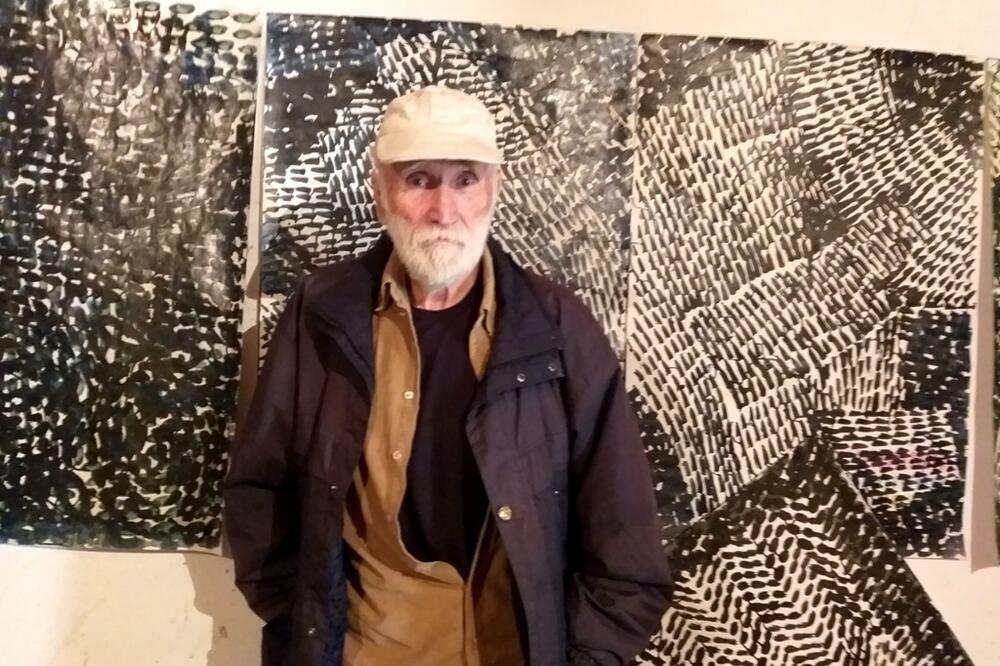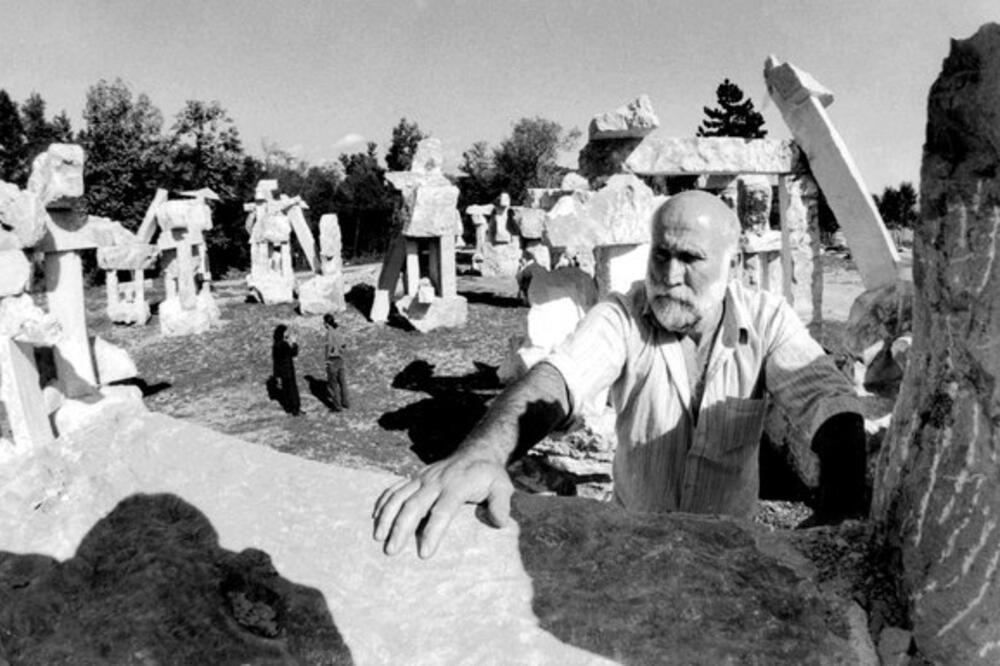Prominent painter and sculptor, author of the ruined Stone Town in Nikšić, Ratko Vulanović, died today at the age of 82.
Although he has been painting since 1993, Vulanović's name is mostly associated with sculptures. And those made of stone, so it's no wonder that the artist, who managed to translate the soul of stone into sculptures, is called the last stonemason of our time.
When he ran out of physical strength to "move and move" the mountains and bring the stone soul closer to people, he returned to drawings which, as he told Vijesti, were sculptures transformed into sculptural landscapes.
He was born in the village of Laz near Nikšić. He completed eight years of school in the town of Trebjes, and left the Art School in Herceg Novi to enroll in the Academy of Fine Arts in Belgrade, where he graduated and later earned a master's degree.
He started exhibiting as a student, and the awards came very quickly. After completing his studies, he received the status of a freelance artist.
He became a member of ULUS in 1969, and in 1972 he received a scholarship from the Moša Pijade fund, after which he went to Greece, where he stayed for some time.

In 1973, he was in the sculpture colony Beli Venčac, Aranđelovac, where small-format sculptures were created that were later exhibited throughout Yugoslavia.
In 1987, he stayed in the Titograd aluminum plant colony, after which, the following year, as a result of that work, the "Veliki predio" sculpture complex was created, for which he received the "Politik" award. In 1986, he received the status of a prominent artist of the city of Belgrade.
He stayed in Radalje near Zvornik in 1990, where he created large-scale granite sculptures. They are still found today in Jalovik, Šabac, Pančevo.
He came to Nikšić in 1992, and a year later he began the story of the city that was called the "Megalithic Complex" and which was located between the Cathedral, the Castle of King Nikola and the Cultural Center, and which they called Nikšić's "Stonehenge". In mid-April 2008. The stone city was removed in XNUMX. The artist, who had no difficulty in "moving and relocating" the mountains, to bring the stone "soul" closer to the people, initiated a lawsuit to return the city to his hometown. The process has not been completed even to this day.
The municipality allegedly planned to build a botanical garden and art studios on that area of about 30.000 square meters, which has not been done even to this day, and the Stone City ended up on the plateau of the Techno Base in Kapino Polje.
It will be recorded that the members of the UNESCO commission, which have been dealing with the protection of cultural monuments, old cities and works of art for a long time, when they learned that the Stone Town in Nikšić ceased to exist, came to the town under Trebjes and estimated that its value was 21,8 million euros.
The Montenegrin Academy of Science and Arts and the Faculty of Fine Arts refused to form a commission, although in other subjects individual sculptors or directors of institutions gave their opinions.
Osvaldo Martinez, one of UNESCO's experts, came to Nikšić in 2008 because he heard that the Stone City would be removed. He then suggested the people of Nikšić to form a living wall and thus protect the displacement of the boulders. It seems that the people of Nikšić either did not hear his call well or, due to their lack of language skills, did not understand - only the living wall was missing.
At that time, Vulanović was particularly hurt by the silence of people for whom culture is both "vocation and location". Who knows. Perhaps the cultural workers were also petrified, like the audience in Paris that was shown a film about the demolition of Nikšić's "Stonehenge", and that's why they didn't react.
There is an extensive bibliography of Vulanović's work and solo exhibitions compiled by the most important contemporary art critics and artists.
Bonus video:




